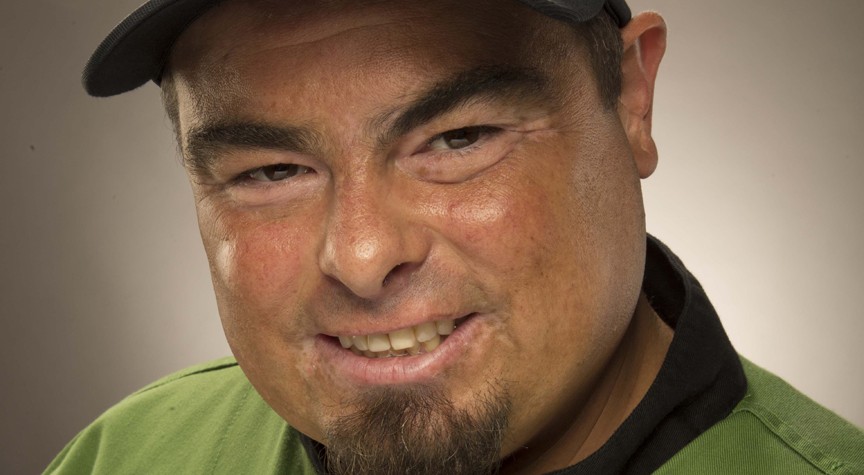You might not think of sugar as a risk factor for heart disease. But if you connect the dots, it’s there.
“We have long understood the relationship between sugar and obesity, but researchers have also identified a link between sugar consumption and the risk of metabolic disease and dying of heart disease,” says Catherine Hamilton, Ph.D., vice president for consumer services and planning for Blue Cross and Blue Shield of Vermont and a UVM faculty member.
In fact, sugar is a behind-the-scenes factor in all three of what Hamilton calls “the most critical health issues facing the U.S. and Vermont communities today”: heart disease, diabetes and obesity.
For example, take diabetes. “While sugar does not cause diabetes directly,” she says, “epidemiological research has shown a relationship between drinking sugar-sweetened beverages and diabetes risk factors.”
Addiction & The Effects of Sugar in Health
Americans are not always aware of the hold that sugar has on them – or that its hold may creep up on them.
“Some researchers suggest that sugar may be addictive,” Hamilton explains. “As a mom, I see this in my own kids, who crave sweets and beg for sugary treats and soda, which I have attempted to ban from my cupboards and fridge.”
Statistics Tell the Story
Because Vermont consistently ranks as one of the top five healthiest states in the annual America’s Health Rankings, and because the state has one of the lowest obesity rates, Vermonters may not think sugar is anything to worry about.
Yet Vermont’s obesity rates have steadily climbed since 1990, paralleling the overall national increase. The statistics on diabetes and heart (cardiovascular) disease are similarly jarring, according to the state’s latest Behavioral Risk Factor Survey. Consider that:
- Almost one-quarter of Vermonters are obese, and 37 percent are overweight.
- 6 percent of adults have borderline or pre-diabetes, and 7 percent of Vermonters have diabetes. Those rates have steadily increased.
- Cardiovascular disease, which can lead to heart attacks and stroke, is the leading cause of death for Vermonters.
These statistics, according to Hamilton, show that “we still have work to do.” She suggests one place to start is curbing our sugar addiction.
“According to the American Heart and Stroke Association, Americans are consuming an average of 22 teaspoons of sugar a day, when they should be limiting this to six teaspoons a day,” she says. “As an example, just one bottle of soda contains eight teaspoons of sugar.”
Documentary Exposes Sugar Habit
To understand the implications of America’s love affair with sugar, Hamilton recommends a recent documentary film, Fed Up. A website for the film includes discussion materials, resources and these facts:
- In 2012, Americans consumed an average of 765 grams of sugar every five days, or 130 pounds each year.
- There is overwhelming evidence of the link between obesity and the consumption of sweetened beverages, such as soft drinks, energy drinks, sweet teas, and sports drinks.
- One soda a day increases a child’s chance of obesity by 60 percent.
- Almost 45 percent of overweight or obese children ages 10 to 17 are low-income.
- People who drink one to two sugar-sweetened beverages per day have a 26 percent higher risk for developing type II diabetes.
Vermont’s Role in Curbing Sugar
Even with these dire statistics, however, Hamilton has faith that Vermont can make a difference by taking the lead.
“Vermonters have a strong history of coming together to connect community organizations and people around issues that matter to the well-being of our citizens,” she says. “Raising our awareness of the risks of sugar and the importance of food choices is critical to our well-being, our children’s health and of the costs of our health system long term.”
Pay Attention to Food Labels
And how can we change our habit?
Change can start when you’re standing in the grocery aisle, weighing what to buy, Hamilton says. Pay attentions to food labels, especially the sugar content and ingredients. Besides plain old “sugar,” be aware of these different names for sugar:
- Anhydrous dextrose
- Brown sugar
- Confectioner’s powdered sugar
- Corn syrup and corn syrup solids
- Dextrose
- Fructose
- High-fructose corn syrup (HFCS)
- Honey
- Invert sugar
- Lactose
- Malt syrup
- Maltose
- Maple syrup
- Molasses
- Nectars (e.g., peach nectar, pear nectar) and fruit nectar
- Pancake syrup
- Raw sugar
- Sucrose
- White granulated sugar
- Cane juice
- Evaporated corn sweetener
- Fruit juice and fruit juice concentrate, dehydrated fruit juice, fruit juice crystals
- Crystal dextrose
- Glucose
- Liquid fructose
- Sugar cane juice
- Dextrin
- Maltodextrin
- Dextran
- Barley malt
- Beet sugar
- Caramel
- Buttered syrup
- Carob syrup
- Date sugar
- Diatase
- Diatastic malt
- Golden syrup
- Turbinado
- Sorghum syrup
- Refiner’s syrup
- Ethyl maltol
- Yellow sugar
- And don’t forget carbohydrates. They break down into sugar.
Maybe it’s easiest to remember what food author and journalist Michael Pollan says: “Don’t eat anything your great-grandmother wouldn’t recognize as food.”





